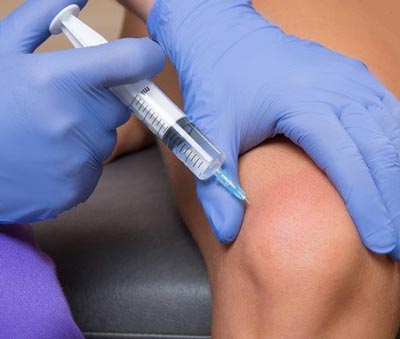Keywords: Osteoarthritis, knee pain, ozone treatment, ozone therapy.
Osteoarthritis (OA) is the most common degenerative joint disease and a growing health problem affecting more than half of the population over the age of 65. It is characterized by inflammation in the cartilage and synovium, resulting in the loss of joint structure and progressive damage to the cartilage.

Many pro-inflammatory mediators are elevated in OA, including reactive oxygen species (ROS) such as nitric oxide (NO) and hydrogen peroxide (H2O2). Damaged articular cartilage remains a challenge to treat due to the limited self-healing capacity of the tissue and unsuccessful biological interventions. This highlights the need for better therapeutic strategies to heal damaged articular cartilage. Ozone (O3) therapy has been shown to have positive results in the treatment of OA; however, the use of O3 therapy as a therapeutic agent is controversial. There is a perception that O3 is always toxic, whereas evidence indicates that when it is applied following a specified method, O3 can be effective in the treatment of degenerative diseases. The mechanism of action of O3 therapy in OA is not fully understood and this study summarizes the use of O3 therapy in the treatment of damaged articular cartilage in OA.
“Suffering from osteoarthritis is prevalent among elderly patients so the use of an intra-articular injection of medical ozone may well be an effective way to relieve the pain of tissue inflammation and imbalanced homeostasis in the knee’s cartilage”, researchers ensue.

Clinical trial conducted:
Aim: To evaluate the effect of intra-articular injection of medical ozone given into the knee of the osteoarthritis patients, and to compare it with taking celecoxib and glucosamine orally. Researched by Xu Feng and Li Beiping.
Materials and methods: In the present study, 76 patients suffering from osteoarthritis were randomly assigned into two groups. In the ozone group, 20 ml ozone-oxygen mixture gas concentration of 20 μg/ml was injected into knee articular cavity and each patient took oral celecoxib and glucosamine hydrochloride. Patients in control group only took the celecoxib and glucosamine hydrochloride orally. Pain score and Lysholm knee score were measured prior to the injection (pre-treatment) and at one, three, six weeks after the beginning of the treatment (posttreatment).
Results: After the treatment, the pain intensity and function significantly improved in the two groups compared with the pre-treatment (p<0.05). In the ozone group, three weeks after intervention, the pain score improved significantly when compared with the control group (p<0.05). After the treatment, the lysholm scores increased significantly (p<0.05), but in the ozone group, it improved faster.
Conclusion: Intra-articular injection of ozone plus oral celecoxib and glucosamine could significantly decrease pain intensity in patients with mild to moderate Knee Osteoarthritis (KOA), and improve their functional status early than oral celecoxib and glucosamine only.
Keywords: Osteoarthritis (OA), Articular cartilage, Ozone (O3) therapy, Reactive oxygen species (ROS), Intra-articular, Medicine, Pain.
Sources/ References




